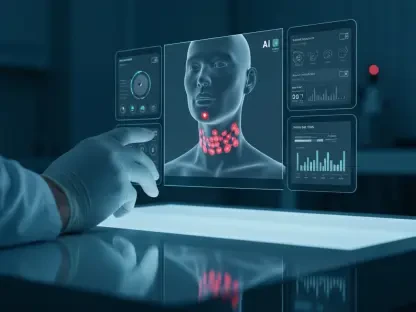The pediatric imaging market, currently valued at $8.7 billion, has attracted significant attention due to its anticipated growth trajectory towards $18.1 billion by 2034. This remarkable expansion is driven in part by a projected compound annual growth rate of 7.7% from 2025 to 2034, indicating a profound shift in healthcare approaches for children. The increasing prevalence of pediatric illnesses, notably congenital disorders, various cancers, neurological complications, and infectious diseases, underscores the demand for early and precise diagnostics. Essential imaging techniques such as MRI, ultrasound, and CT scans provide crucial insights into young patients’ conditions, facilitating timely interventions that are pivotal for successful outcomes. As awareness among parents and healthcare providers grows and access to pediatric healthcare services expands—particularly in developing regions—the momentum in this sector continues to build. This article explores the key drivers fueling this market expansion, focusing on technological innovations and global healthcare initiatives.
Technological Advancements Boost Market Growth
Modern technological innovations are playing a cardinal role in the evolution and growth of pediatric imaging. Recent advancements in imaging systems are increasingly integrating artificial intelligence (AI) to offer safer and more effective diagnostic solutions. AI-based diagnostic tools enhance the accuracy of imaging results, empowering healthcare professionals with detailed insights that aid in comprehensive diagnosis and treatment plans. Furthermore, the advent of portable imaging equipment ensures accessibility across diverse healthcare settings, especially in remote areas and under-resourced regions. Additionally, low-dose imaging techniques are making significant strides in minimizing radiation exposure—a long-standing concern with traditional imaging systems. These innovations not only promise enhanced safety but also optimize the diagnostic process by reducing unnecessary exposure to radiation, which is critical in pediatric care. Such technological progress is paramount in addressing the challenges associated with pediatric imaging, effectively pushing the market towards substantial growth and increased reliance on modern diagnostic applications.
Health Initiatives and Increased Awareness
Growing awareness of pediatric health concerns among parents and healthcare professionals has significantly shaped the demand for pediatric imaging services. Parents are increasingly prioritizing early diagnosis and treatment of various health issues, thereby driving the adoption of advanced imaging services. Healthcare providers are actively disseminating knowledge about the critical role imaging plays in early detection and intervention. Additionally, governmental and non-governmental health initiatives are being implemented worldwide, advocating for children’s health through various programs and campaigns designed to facilitate access to pediatric imaging facilities. Such initiatives aim to ensure timely diagnosis of pediatric conditions by offering support and resources to healthcare systems, particularly in developing nations where access to advanced medical infrastructure is limited. The alignment of healthcare policies with global pediatric health goals further underscores the importance placed on this sector, bolstering the market dynamics by ensuring widespread accessibility and fostering a global standard for pediatric care.
Overcoming Challenges for Future Success
Despite its optimistic outlook, the pediatric imaging market faces substantial challenges, primarily concerning the costs associated with advanced imaging equipment and the potential for radiation exposure in certain modalities, such as CT scans. Addressing these issues involves multi-faceted strategies that emphasize safety, affordability, and accessibility. Manufacturers and healthcare providers are working collaboratively to innovate solutions that reduce the cost barrier for cutting-edge imaging technology, ensuring that these tools are available to broader populations. Moreover, focused efforts on reducing radiation exposure further enhance the safety precaution measures undertaken in pediatric care. Public health agencies are integral to this pathway, advocating for comprehensive educational campaigns and fostering environments conducive to safe and affordable healthcare practices. These endeavors are essential for the sustainability and progression of the pediatric imaging market, ensuring that the anticipated growth is realized through concerted actions that prioritize the well-being of young patients globally.
Strategic Steps for Dynamic Growth
The pediatric imaging market is gaining significant attention, currently valued at $8.7 billion and predicted to reach $18.1 billion by 2034. This impressive growth is fueled by an expected compound annual growth rate of 7.7% between 2025 and 2034, signaling a transformative shift in child healthcare. The increasing incidence of pediatric diseases, including congenital disorders, cancers, neurological issues, and infectious diseases, highlights the critical need for accurate early diagnosis. Vital imaging technologies like MRI, ultrasound, and CT scans offer crucial insights into pediatric conditions, enabling timely interventions crucial for positive outcomes. Growing awareness among parents and healthcare professionals, along with expanding access to pediatric healthcare services—especially in developing regions—is accelerating progress in this field. This exploration delves into the main factors driving market growth, emphasizing technological advancements and global healthcare efforts aimed at improving pediatric care standards.









